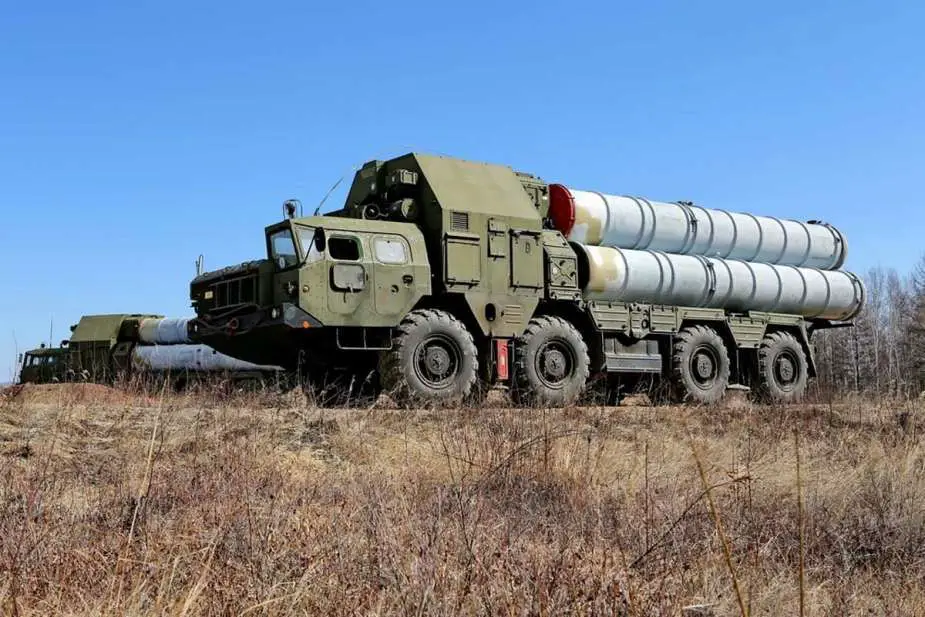According to the Sofia Globe on September 27, 2023, in an unconventional procedure, Bulgaria’s Parliament voted behind closed doors that day to supply unserviceable S-300 missiles to Ukraine.
Follow Army Recognition on Google News at this link

The S-300 missile entered service in 1979 (Picture source: Yandex)
The debate on this issue extended for more than three hours, starting in an open session before moving behind closed doors to receive input from Defence Chief Admiral Emil Eftimov and Air Force second-in-command Brigadier General Petyo Mirchev. When the doors reopened, Parliament had moved on to other agenda items, leaving the outcome of the vote unclear. Deputy Speaker Rositsa Kirova did not announce the results, and the rationale for conducting the vote privately remains undisclosed.
The proposal to provide Ukraine with these unserviceable S-300 missiles, along with surplus 5.45mm cartridges from the Interior Ministry, was tabled by members of Parliament from various political parties, including GERB-UDF, We Continue the Change-Democratic Bulgaria, and the Movement for Rights and Freedoms (MRF) on September 26, 2023.
Despite the absence of an official announcement regarding the vote's outcome, reports indicate that MRF MP Delyan Peevski stated that the decision had been approved. In contrast, the pro-Kremlin party Vuzrazhdane is reported to have opposed the move, and members of the Bulgarian Socialist Party left the House during the closed-door segment of the sitting.
During the open debate, the chairman of the parliamentary defense committee, Hristo Gadzhev, emphasized that the decision pertained to unserviceable systems that even the manufacturer could not repair due to their age. Gadzhev reassured that the quantity of missiles to be supplied to Ukraine would be minimal and would not compromise the combat readiness of the Bulgarian military. He also highlighted the additional advantage that supplying these missiles would eliminate the risk to Bulgarian military personnel associated with storing such unfit systems. Moreover, Gadzhev underlined the importance of Bulgaria's focus on acquiring new anti-aircraft missile systems.
Earlier in the day, Defence Chief Admiral Emil Eftimov disclosed on Bulgarian National Television that the S-300 missiles Bulgaria planned to supply to Ukraine represented a small percentage of Bulgaria’s total stockpile, estimated to be between three and five percent. Eftimov also said that the armament previously supplied by Bulgaria to other nations had not affected the combat capability of the country's military.
The draft decision is now subject to scrutiny by Parliament’s defense committee before a final vote is taken by the full House. If approved, the quantities of missiles and cartridges to be provided to Ukraine will be determined by Bulgaria’s Defense Ministry.
The S-300P, known as the SA-10 Grumble in NATO terminology, is a long-range surface-to-air missile system developed and manufactured by the Russian company Almaz Antey. It was initially designed to protect critical fixed targets such as government facilities, industrial complexes, command centers, military bases, airfields, and nuclear sites. Introduced into Russian service in 1979, the S-300P has been exported to numerous countries, including Algeria, Armenia, Azerbaijan, Belarus, Bulgaria, China, Croatia, Cyprus, Greece, Hungary, Kazakhstan, Slovakia, Ukraine, and Vietnam, although it is no longer in production.
The SA-10 Grumble system comprises various variants, each adapted for different operational requirements, including the naval version (S-300F), a tracked vehicle-mounted version (S-300V), versions mounted on trucks (S-300PS, S-300PM, S-300PM1, S-300PM2), and export versions (S-300PMU, S-300PMU1, S-300PMU2). These variations offer different capabilities and ranges to meet the specific needs of the user.
The core component of the S-300P system is its missile launcher unit, based on a trailer carrying four missile silos. The missile used in the S-300P is the V-500/5V55K, a first-generation missile with a single-stage solid rocket motor. It is stored and launched from sealed cylindrical launch tubes or canisters. The missile incorporates solid-state electronics in its guidance system and has a maximum effective engagement range of 47 kilometers, capable of engaging targets at altitudes ranging from 100 to 30,000 meters.
















